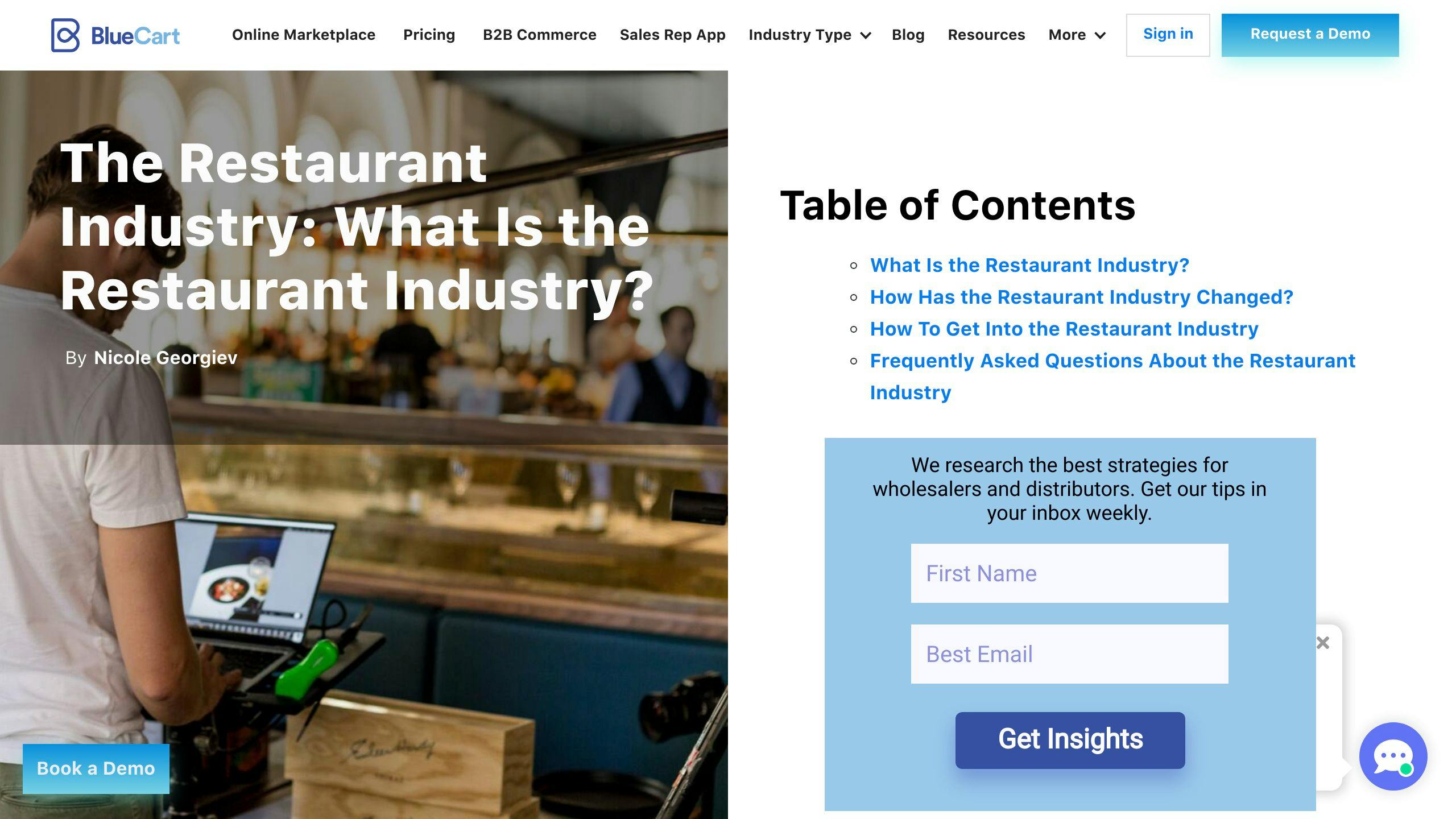March 6, 2024

Ensuring your restaurant's AI phone agent can handle complex orders smoothly is crucial for customer satisfaction and operational efficiency. Here's a straightforward guide to setting up and optimizing an AI phone system like Loman AI for your restaurant:
By following these steps, your restaurant can enhance order-taking efficiency and customer satisfaction with a smart, hardworking AI phone agent.
AI phone agents are like smart helpers that use computer brains to understand what people say, talk back, and help with tasks like taking food orders over the phone. They learn from every conversation to get better at figuring out what customers want, even when orders are complicated.
They can do things like:
AI phone agents use a few smart tools to chat like humans:
Together, these tools help AI phone agents talk naturally, understand complex orders, and handle tasks smoothly.

AI phone agents are great for restaurants because:
AI phone agents are a smart choice for restaurants looking to make things run smoother and keep customers happy. By taking care of orders, they let the staff focus on making the dining experience even better.
Getting your AI phone agent ready to take complex orders from customers starts with getting the right data together. Think of it like teaching a new staff member by showing them lots of different situations they might face.
First, you need to gather lots of examples of orders. These can be real or made-up calls that show all sorts of orders customers might place:
By showing the AI lots of different order types, it learns how to understand what customers want, no matter how they say it.
Then, you write down what's said in these calls and mark important details like:
Doing this for lots of orders teaches the AI what to listen for and what's important in a conversation.
When you're putting together your examples, variety is important. You want your AI to understand everyone, so include:
This mix makes sure your AI can handle any call it gets. Also, make sure the recordings are clear, the writing is accurate, and everything is marked correctly. This helps the AI learn better and makes it ready to take on all kinds of complex orders.
Training your AI phone agent to handle complex orders at your restaurant is all about teaching it with the right examples and making sure it understands people well. Here’s how to do it step by step:
First, you need a big mix of different order examples. The more situations the AI sees, the better it gets at understanding what people want.
Use the latest tech in understanding language, like BERT or GPT-3. These tools are really good at getting what people mean, and you can teach them more about taking orders.
Teach your AI in steps, checking how well it does with test orders. If it makes mistakes, figure out why and teach it more about those tricky parts. Keep doing this until it’s really good at taking orders.
Make sure your AI knows all about your restaurant, like the menu and common special requests. This helps it understand orders that are specific to your place.
Finally, connect your AI to the systems you use in your restaurant, like the point-of-sale (POS) system. This way, it can take orders directly without needing a person to do anything.
By following these steps, your AI will learn to handle all kinds of orders, ask questions if something isn’t clear, and keep getting better over time. It’s like having a super-smart helper that understands your customers and helps make your restaurant run smoothly.
Natural language processing (NLP) techniques let AI phone agents understand what customers say when they order food. Here's how it works:
This part turns what people say into text the computer can read. It helps the AI figure out the words in customer orders. To do this well, it:
Making sure speech recognition works right means the AI won't miss any part of an order.
This step looks at the order's text and picks out important bits, like what's being ordered and any special requests. It does things like:
Good semantic parsing helps the AI know exactly what the customer wants.
This keeps track of the conversation, so the AI can:
This helps make sure the final order is exactly right, even if the conversation goes back and forth a bit.
By using these NLP techniques, AI phone agents can handle detailed orders, special requests, and changes easily. This means restaurants can give customers exactly what they ordered, making everyone happy.
Making your AI phone agent's replies more personal can really make customers feel special. Here's how to do it simply:
By making your AI's responses more personal and paying attention to how customers feel, you can make everyone's experience better. This helps keep customers coming back and makes ordering smoother.
Making sure your AI phone agent works well with the restaurant's main computer systems is key for handling orders smoothly from start to finish. By connecting this smart system with your cash register software (POS), customer info databases (CRM), and stock lists, orders can go straight to the kitchen without anyone having to step in.
Connecting the AI phone agent directly with the POS system means orders go right into the system without extra steps. This cuts down on mistakes and saves time.
Right after a customer finishes ordering through the AI, that order pops up in the kitchen for the cooks to start working on. This makes the whole process from ordering to cooking faster and simpler.
When the AI phone agent can use the restaurant's CRM (where customer details are kept), it can make conversations more personal. The AI can say hello to regulars by name and remember what they like to eat.
Being able to see past orders also lets the AI suggest deals or extras that the customer might like, based on what they've enjoyed before. This makes the experience feel more special.
If the AI phone agent knows what's in stock in real-time, it can tell customers right away if something they want isn't available.
This means if a regular item is out, the AI can suggest something else without slowing things down. This keeps orders moving smoothly.
By working together with the POS, CRM, and inventory systems, AI phone agents can offer great service. Orders are handled quickly without needing people to step in, letting the team focus on making guests feel welcome.
Everything works together without hiccups, reducing mistakes and allowing for personalized service. Making sure these systems work together is crucial for getting the most out of AI phone agents in restaurants.
Making sure your AI phone agent keeps getting better is key. Here's how to do it step by step:
Keep an eye on important numbers like:
Check these numbers every day and watch for any big changes. Set goals and dig into any drops in numbers.
Ask customers how they felt about their call:
Use this feedback to see where you need to improve and what's working well.
Have your team make test calls every week and score how the AI did on a scale of 1 to 10.
Change up who makes the calls to keep things fair. Watch how the scores change over time, aiming to get better.
Keep updating your AI with new information:
Always add new examples and fine-tune the AI to improve.
By keeping track of how things are going, listening to what customers say, and updating the AI often, it will get better and better.
Even the best AI phone agents can bump into problems when taking food orders. Here's a look at some usual troubles and ways to fix them.
It's important for the AI to understand everyone. But sometimes, this can be tough because of:
When customers want something special or different, it can confuse the AI. Here's what to do:
Sometimes, customers might ask for something the restaurant doesn't have. Here's a good approach:
By planning for these challenges and knowing how to solve them, you can ensure every customer gets what they want quickly and with a smile.
Restaurants need to take phone orders smoothly to keep their customers happy and everything running well. AI phone agents are great for this because they can handle even the trickiest orders without making mistakes.
To make these AI helpers work best, restaurants need to spend time getting them ready with the right training, use smart tech to help them understand language better, connect them to the restaurant's main computer systems, and always check how they're doing. As these AI agents talk to more customers, they get even better at understanding special requests and tricky questions.
With an AI phone agent, the restaurant team can spend more time looking after customers who come to eat in. People calling in orders will like how fast and correctly the AI takes their order. Over time, the AI will get even smarter and be able to handle any new challenges.
Here are the main steps for success:
By doing these things, restaurants can make taking orders much easier and more efficient. AI phone agents show that you don't need a lot of people to handle a lot of calls - just a smart and hardworking virtual helper.

Enter your information in the form to receive a call from Loman and place an order like a customer would!